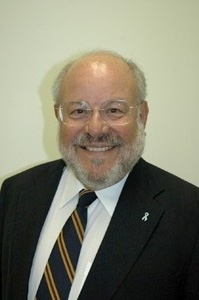Also, the U.S. has begun to power Mars rovers with plutonium. After using solar power on Mars rovers, in 2012 NASA launched a Mars rover it named Curiosity fueled with 10.6 pounds of plutonium. NASA plans to launch a Mars rover nearly identical to Curiosity, which it is calling Mars 2020, in 2020.
As devastating in terms of financial damage were last week's explosions of the Virgin Galactic SpaceshipTwo and Antares rocket, an accident involving a nuclear-powered vehicle or device could be far more costly
The NASA Final Environmental Impact Statement for the Curiosity (then called Mars Science Laboratory) mission states, for example, that the cost of decontamination of areas affected by dispersed plutonium would be $267 million for each square mile of farmland, $478 million for each square mile of forests and $1.5 billion for each square mile of "mixed-use urban areas." http://science.nasa.gov/media/medialibrary/2010/11/05/MSL-FEIS_Vol1.pdf
Odds of an accident were acknowledged as being low. The EIS said a launch accident discharging plutonium had a 1-in-420 chance of happening and could "release material into the regional area defined" within "62 miles of the launch pad" on Cape Canaveral, Florida. The EIS said that "overall" on the mission, the likelihood of plutonium being released was 1-in-220. If there were an accident resulting in plutonium fallout that occurred before the rocket carrying Curiosity broke through Earth's gravitational field, people could be affected in a broad swath of Earth "anywhere between 28-degrees north and 28-degrees south latitude" on Earth, said the EIS.
Gagnon said at the time: "NASA sadly appears committed to maintaining its dangerous alliance with the nuclear industry...The taxpayers are being asked once again to pay for nuclear missions that could endanger the lives of all the people on the planet. Have we not learned anything from Chernobyl and Fukushima? We don't need to be launching nukes into space. It's not a gamble we can afford to take."
Curiosity made it up, and to Mars.
But in NASA's history of nuclear power shots, happening since the 1950s, there have been accidents. The worst among the 26 U.S. space nuclear missions listed in the Curiosity EIS occurred in 1964 and involved the SNAP-9A plutonium system aboard a satellite that failed to achieve orbit and dropped to Earth, disintegrating as it fell. Its plutonium fuel dispersed widely That accident spurred NASA to develop solar energy for satellites and now all satellites are solar-powered as is the International Space Station.
And in recent times, solar power has been increasingly shown to be practical even to generate on board electricity for missions far out in space. On its way to Jupiter now is NASA's Juno space probe, chemically-propelled and with solar photovoltaic panels generating all its on board electricity. When Juno reaches Jupiter in 2016 it will be nearly 500 million miles from the Sun, but the high-efficiency solar cells will still be generating power. click here
In August, the European Space Agency's Rosetta space probe, similarly solar-powered, rendezvoused with a comet in deep space, 400 million miles from Earth. click here
Advances, too, have been made in propelling spacecraft in the vacuum of space. The Japan Aerospace Exploration Agency in 2010 launched what it termed a "space yacht" it called Ikaros which successfully got its propulsion power from the pressure on its large sails of ionizing particles emitted by the Sun. http://www.space.com/25800-ikaros-solar-sail.html
Among other ways of propelling spacecraft, discussed at a Starship Congress last year in Texas was a system using orbiting lasers to direct beams on to a spacecraft. The magazine New Scientist said "beam sails are regarded as the most promising tech for a starship." http://www.sciencedirect.com/science/article/pii/S0262407913620655
A scientist long-involved in laser space power research is Geoff Landis of the Photovoltaics and Space Environment Branch at NASA's Glenn Research Center in Cleveland who, in a 2002 NASA publication, "The Edge of Sunshine," wrote: "In the long term, solar arrays will not have to rely on the Sun. We're investigating the concept of using lasers to beam photons to solar arrays. If you make a powerful enough laser and can aim the beam, there's really isn't any edge to sunshine--with a big enough lens, we could beam light to a space-probe halfway to alpha-Centauri!" http://science.nasa.gov/science-news/science-at-nasa/2002/08jan_sunshine/
(Note: You can view every article as one long page if you sign up as an Advocate Member, or higher).





